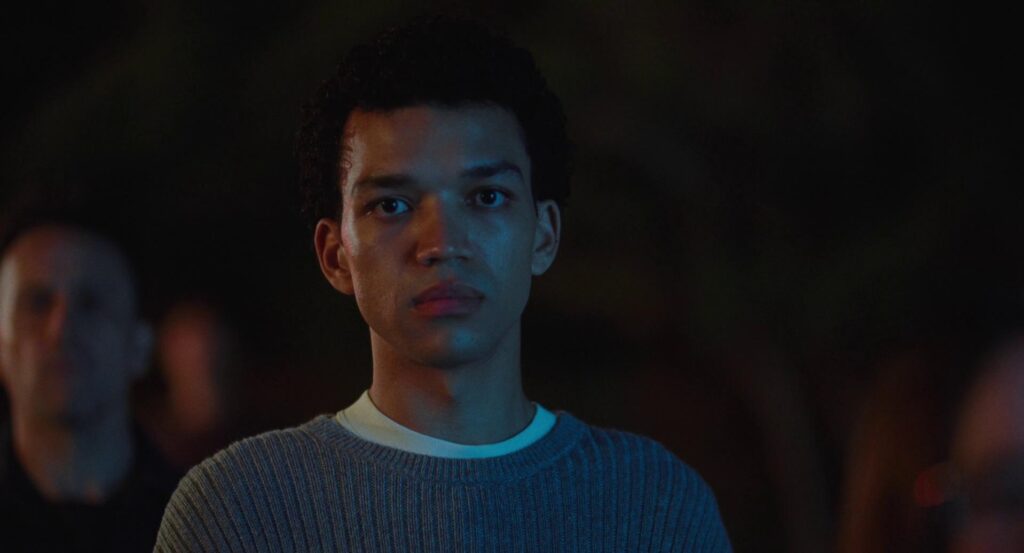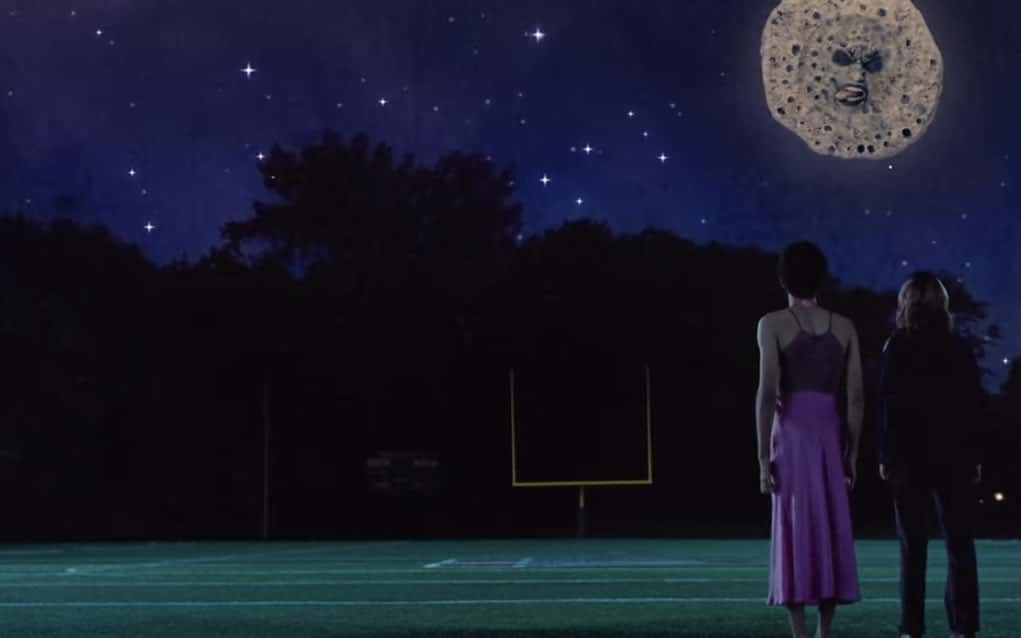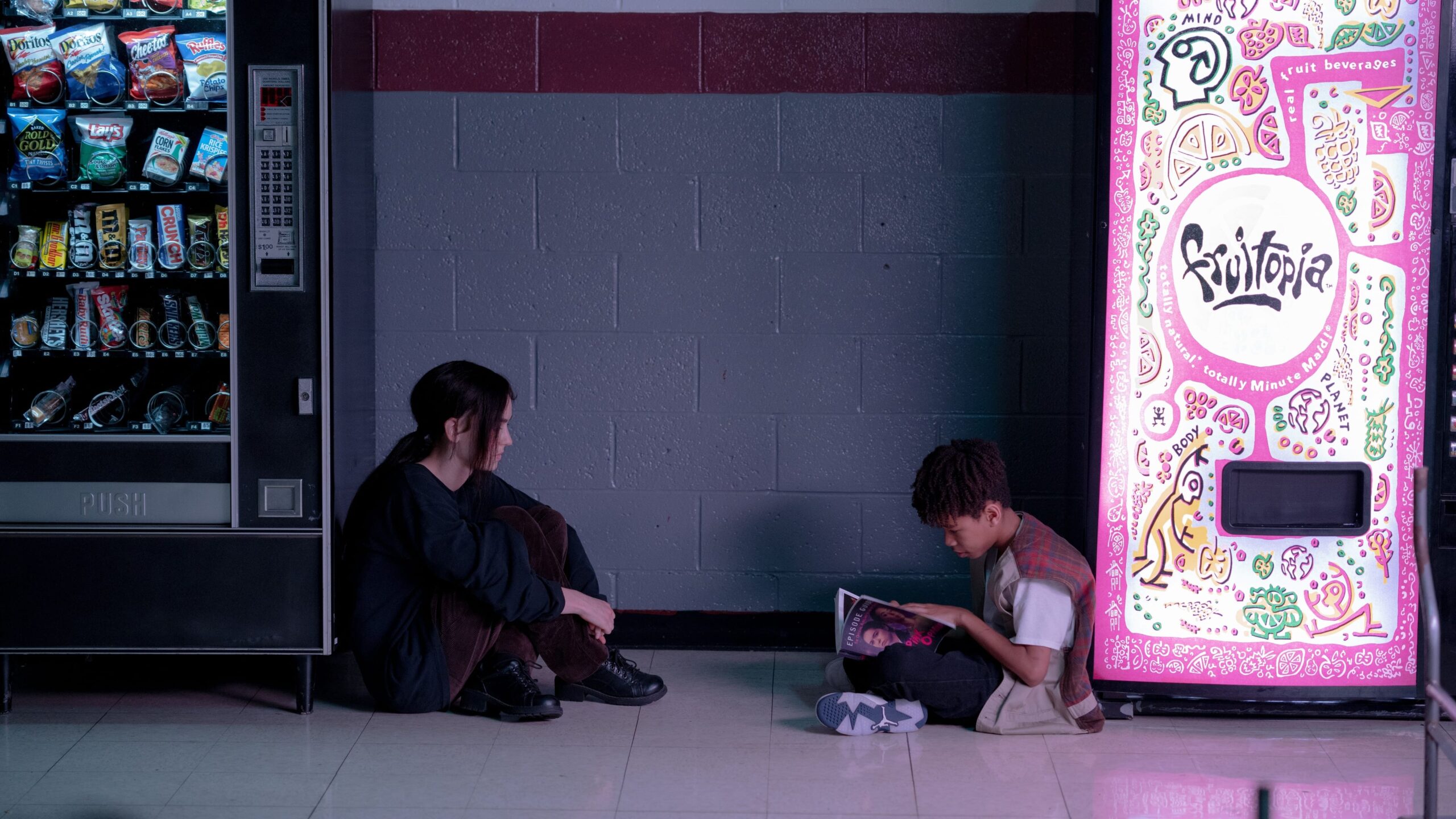I Saw the TV Glow isn’t necessarily a film for everyone. Its subtextual themes are likely to resonate with a specific audience—and, unfortunately, I am not part of that group. Despite my wishes, I realize I am certainly not the intended audience for this film. It is made for those who feel they don’t conform, who exist outside the norm, and who are still discovering their true selves. This new work from pioneering non-binary filmmaker Jane Schoenbrun speaks to them on multiple layers.
The film can provoke fierce discussions regarding its intentions and directorial choices, especially in certain moments. I, too, found some of the writing and direction melodramatic, immature, and even goofy at times. Yet, it clearly speaks to many people. Through one such discussion, it became evident that perhaps the film wasn’t made for me to fully understand—it’s meant for others. The connection with its intended audience is undeniable. That said, I do have criticisms, particularly regarding the casting.

Justice Smith’s portrayal stands out as one of the least convincing performances I’ve seen. His deep, strained voice while asking to stay up past bedtime, a pivotal character moment, feels unintentionally comical.
It’s reminiscent of scenes where elderly actors awkwardly play younger roles, like Robert De Niro in The Irishman or Steve Buscemi’s infamous “How do you do, fellow kids?” scene. Smith’s portrayal of both younger and older versions of the character feels distracting, breaking the suspension of disbelief. The use of minimal makeup and chapped lips to signify aging feels cheap, especially given what modern prosthetics can achieve.

The film shines most in its dramatic moments, where its queer and transgender themes feel thoughtful and engaging. These grounded, relatable scenes foster a deep connection between the characters and the audience. However, the film loses its way when it leans into thriller elements, shifting from touching drama to melodrama.

At times, the production feels more like a student theatre project than a professional A24 film. For example, a drawn-out, monotone monologue towards the end, disguised as part of the fictional TV show The Pink Opaque, feels overwrought and farcical rather than empowering. Another scene, where the room freezes and the character Owen falls to his knees in a dramatic outburst, feels forced and hollow, undermining its intended emotional impact.
Yet, my reaction to these scenes might reflect my own biases. Dismissing Owen’s monologue as “crazy” without fully absorbing the words highlights how easy it is to misunderstand or overlook marginalized experiences. It mirrors how society often labels misgendered or closeted individuals as “over the top” or “out of line.” These moments challenge viewers like me to confront our own immaturity and dismissiveness, even if we harbor no overt prejudice.
The film forces a self-reflection on how difficult it is to break from conformity and how easily we put others—and ourselves—into boxes. Ultimately, I Saw the TV Glow may be difficult for some to fully connect with. But for those it speaks to, it could be life-changing. And for those it doesn’t, it remains a valuable opportunity to explore perspectives outside one’s own and reflect on one’s role in society. Despite its flaws, the film is worth watching and discussing, rather than dismissing outright.

Chaitanya Tuteja is someone who enjoys sharing his thoughts on books, movies, and shows. Based in India, he appreciates exploring different stories and offering honest reflections. When not reflecting on his favorite media, Chaitanya enjoys discovering new ideas and embracing life’s simple moments.

